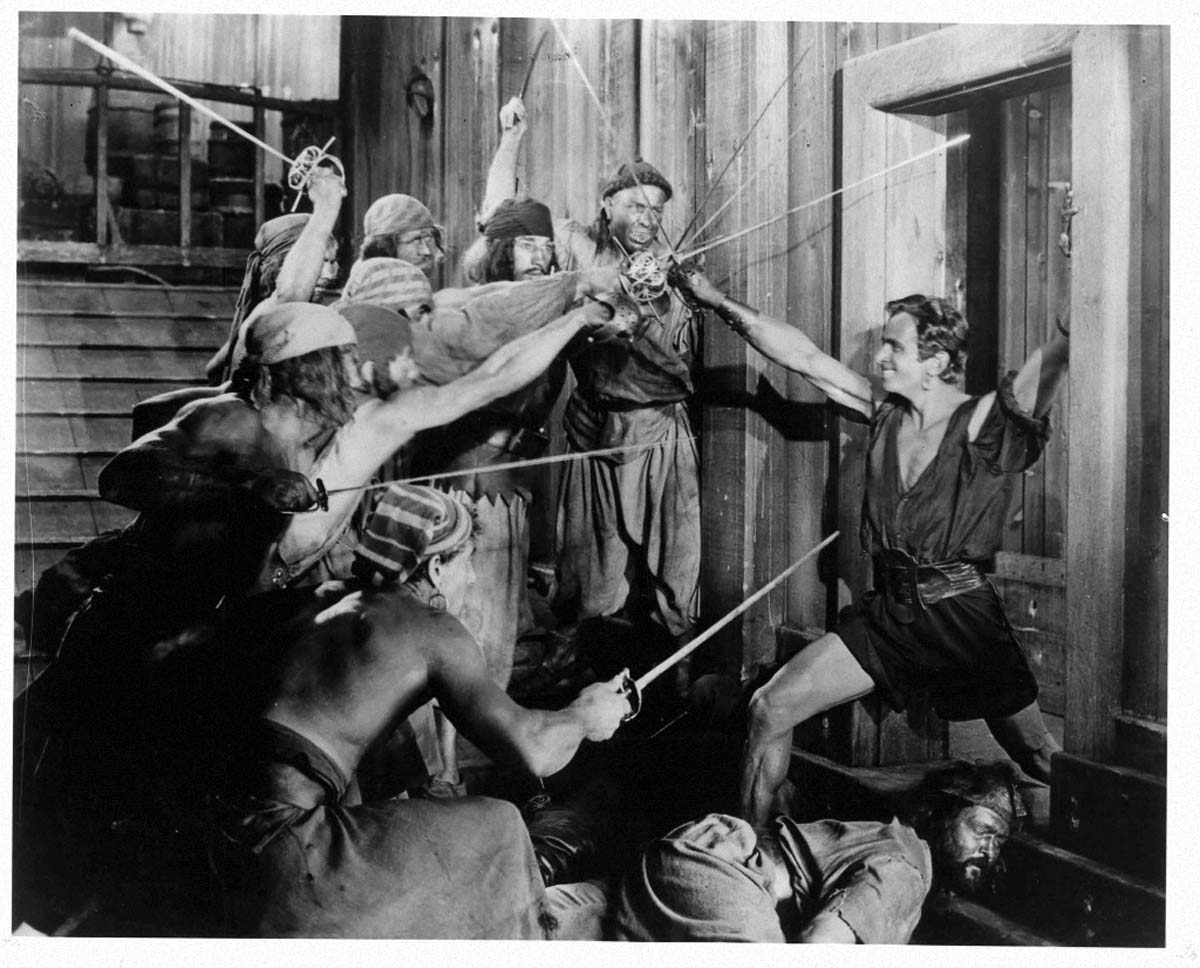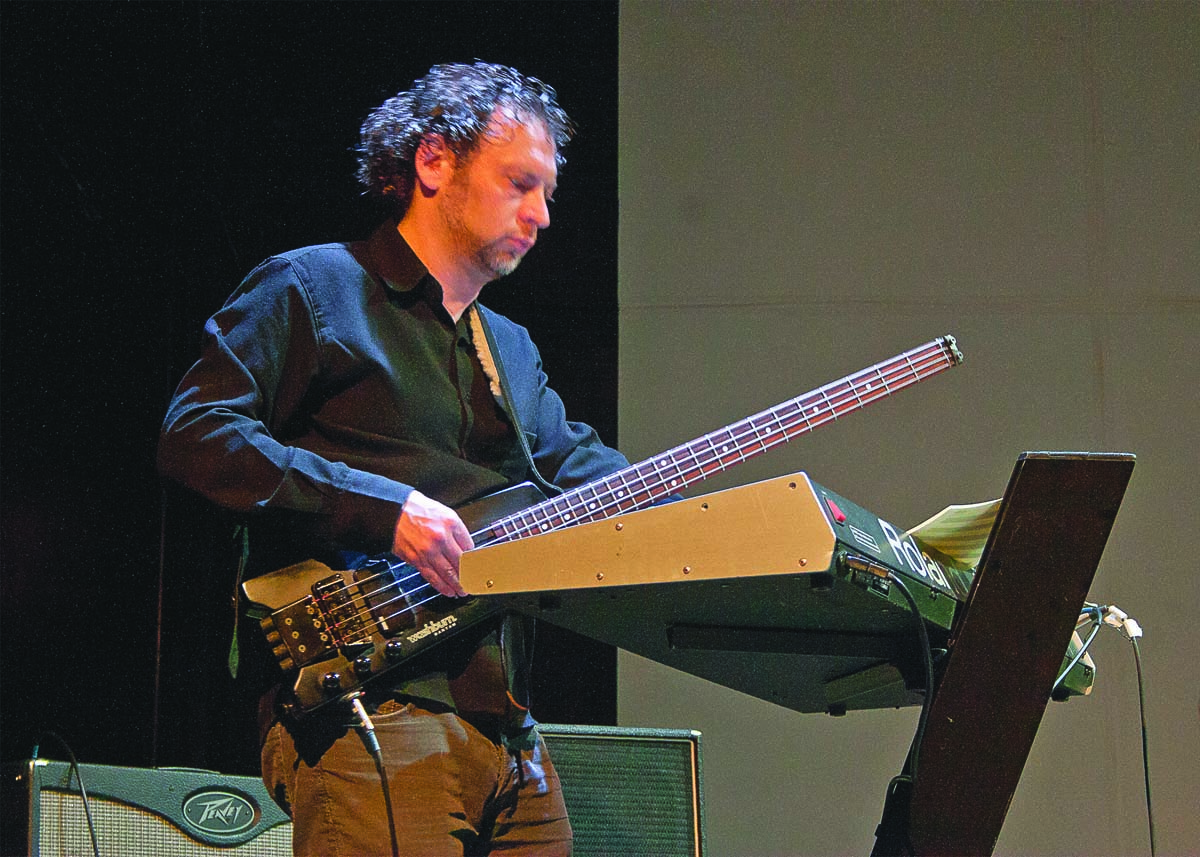
Lois Weber was not only one of the first woman film directors, but as proven in the 1913 short Suspense she co-directed, she may have also helped invent the split-screen shot. Among the sight gags in Suds is a squatting laundry worker played by Mary Pickford being picked up by her neck until she is forced to stand. And there were multiple sequences in The Black Pirate—which was shot in two-color Technicolor—showing Douglas Fairbanks plunging a knife into the top of a large sail on a wooden ship as gravity safely glides him down to the deck.
How influential these elements of the early 20th century were for the movies that would follow over the decades may be lost on today’s cinema-goers, who yawn at stupendous special effects and seamless computer-animated graphics. But in revisiting Suspense, Suds and The Black Pirate, I wondered several times in each silent film: How did they do that?
You can take part in the same exercise—with the added benefit of a big screen as opposed to my flat-screen—when those flickers roll in Long Beach on Thursday, July 25. (The Black Pirate will also be in Santa Ana on July 28, when, just as at the Long Beach stop, the screening includes special live music—but we’ll get to that later.)
The Exhibition Room in Long Beach is a speakeasy one enters with a password and through a phone booth, which makes it era-appropriate for quarterly screenings of silent movies in conjunction with the Long Beach Heritage Museum. The next slate reveals the strong role women played in Hollywood’s early days: The Patsy with Marion Davies, A Woman of Affairs with Greta Garbo, Weber and Phillips Smalley’s Suspense, and industry-powerhouse Pickford’s starring turn in Suds, as well as Through the Back Door.
Suspense featured not only split-screen sequences, but also clever uses of mirrors during a car chase and in a shot inside a home. That is where a new mother (played by Weber) draws the creepy attention of a passing tramp (Sam Kaufman). Aware that she and her baby are targets for mayhem, the mother calls her husband (Valentine Paul), whose race to get home as the tramp grows ever nearer creates the suspense of the title.
In Clarence Brown’s full-length 1928 drama A Woman of Affairs, Garbo’s Diana Merrick is a modern woman for that time, having affairs with numerous men following her husband David’s (John Mack Brown) suicide on their honeymoon. Before that, Diana grieved her forced separation from her true love Neville Holderness (John Gilbert). Years later, as “Nevs” is about to marry Constance (Dorothy Sebastian), he winds up spending the night with Diana. This sets up a compelling scene the next morning, when Diana, who seems oblivious to the fact that she is in a room full of people, spots Nevs. They embrace and profess their love to each other before Diana, sensing something is not right, whips around to a death stare from Constance. Where the story goes from there defines true love.
A Woman of Affairs was a box-office smash that won critical raves for Garbo; Variety called it “by long odds the best thing she has ever done.” Suds is another full-length silent movie, but unlike the Garbo joint, it’s a 1920 rom-com, heavy on the com. Pickford plays Amanda Afflick, a poor worker at a French laundry in London, whose lowly status is confirmed by the thick Cockney misspellings on her dialogue intertitles. Horace Greensmith (Albert Austin), who came into the laundry weeks earlier but has not returned, left behind a shirt that smitten Amanda clings to. When her co-workers ridicule her about her obsession, she makes up an elaborate story about how she and Horace are royals who were forced into the streets because her powerful father opposed their coupling. A love triangle (or, if you count a luckless horse, rectangle) develops, and Amanda does eventually wind up in a home of wealth, but not for the reasons she previously bragged about. As for Horace . . .
And now a word from the venue: The Exhibition Room’s silent movie nights used to include hors d’oeuvres and cocktails for $40. However, because of difficulties in getting food into the venue, those tasty bites have been scrubbed; as a result, ticket prices are slashed in half. Anyone who already bought $40 tickets will get a refund, the speakeasy promises.
* * * * *

Douglas Fairbanks Jr., who mistook the petite Pickford for a new playmate when they first met, grew up to play David’s brother in A Woman of Affairs. Two months after Suds was released, Pickford married the senior Fairbanks, and their Pickfair mansion became a place where power and Hollywood mingled. The couple, along with Charlie Chaplin and D.W. Griffith, also went on to form the independent film-distribution company United Artists.
In 1926’s The Black Pirate, which has a 100 percent Rotten Tomatoes rating, dashing Fairbanks plays an aristocrat who becomes marooned on an island with his father after pirates loot and blow up the ship they had been traveling on. The father later dies, and the son vows revenge for the murder.
As the son weeps on the gravesite he created, the pirate captain (Anders Randolf) and some of his men arrive on the island to bury treasure. Confronting the gang as the “Black Pirate,” the aristocrat offers to fight the strongest among them to prove he is worthy of joining them. This leads to a sword fight in which the pirate captain is killed. But when the Black Pirate takes his place on the pirate ship, not everyone trusts him, especially not the pirate lieutenant (Sam De Grasse).
To prove himself even more worthy, the Black Pirate takes over another ship single-handidly. Also aboard is Princess Isobel (Billie Dove), whom the pirate lieutenant claims as his own. The Black Pirate suggests that they get a ransom for her, although he really has other motives.
Making the Long Beach and Santa Ana screenings of The Black Pirate even more special will be the live score composed by the leader and conductor of the Jack Curtis Dubowsky Ensemble, which will perform it. Dubowsky previously wrote and led performances of new scores for the silents Nosferatu, Dr. Jekyll and Mr. Hyde, The Phantom Carriage, and The Mark of Zorro.
“Having done The Mark of Zorro in 2017, I felt it was time to do another Douglas Fairbanks adventure,” Dubowsky explains. “There is no pirate movie like The Black Pirate. It uses many of the same tropes as Zorro: the hero in disguise, the noble slumming it with the masses, bad guys who end up being good guys, sword fighting, forbidden romance, the preservation of chivalry and, of course, incredible stunt work.”
The Black Pirate with Jack Curtis Dubowsky Ensemble at the Art Theatre, 2025 E. Fourth St., Long Beach, (562) 438-5435; arttheatrelongbeach.org. Thurs., July 25, 7 p.m. $15; also at the Frida Cinema, 305 E. Fourth St., Santa Ana; thefridacinema.org. July 28, 3 & 7 p.m. $15.
Silent Film Series at the Exhibition Room—Long Beach Craft Cocktails, 1117 E. Wardlow Rd., Long Beach, (562) 826-2940; www.theexhibitionroom.com. Thurs., July 25, 8 p.m. $20. 21+.

OC Weekly Editor-in-Chief Matt Coker has been engaging, enraging and entertaining readers of newspapers, magazines and websites for decades. He spent the first 13 years of his career in journalism at daily newspapers before “graduating” to OC Weekly in 1995 as the alternative newsweekly’s first calendar editor.

